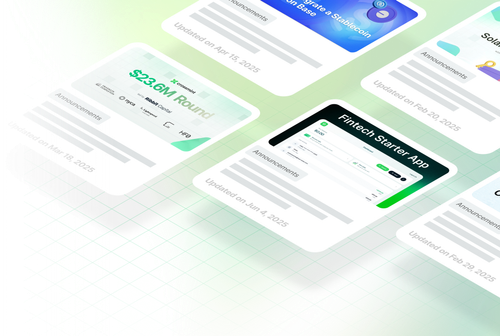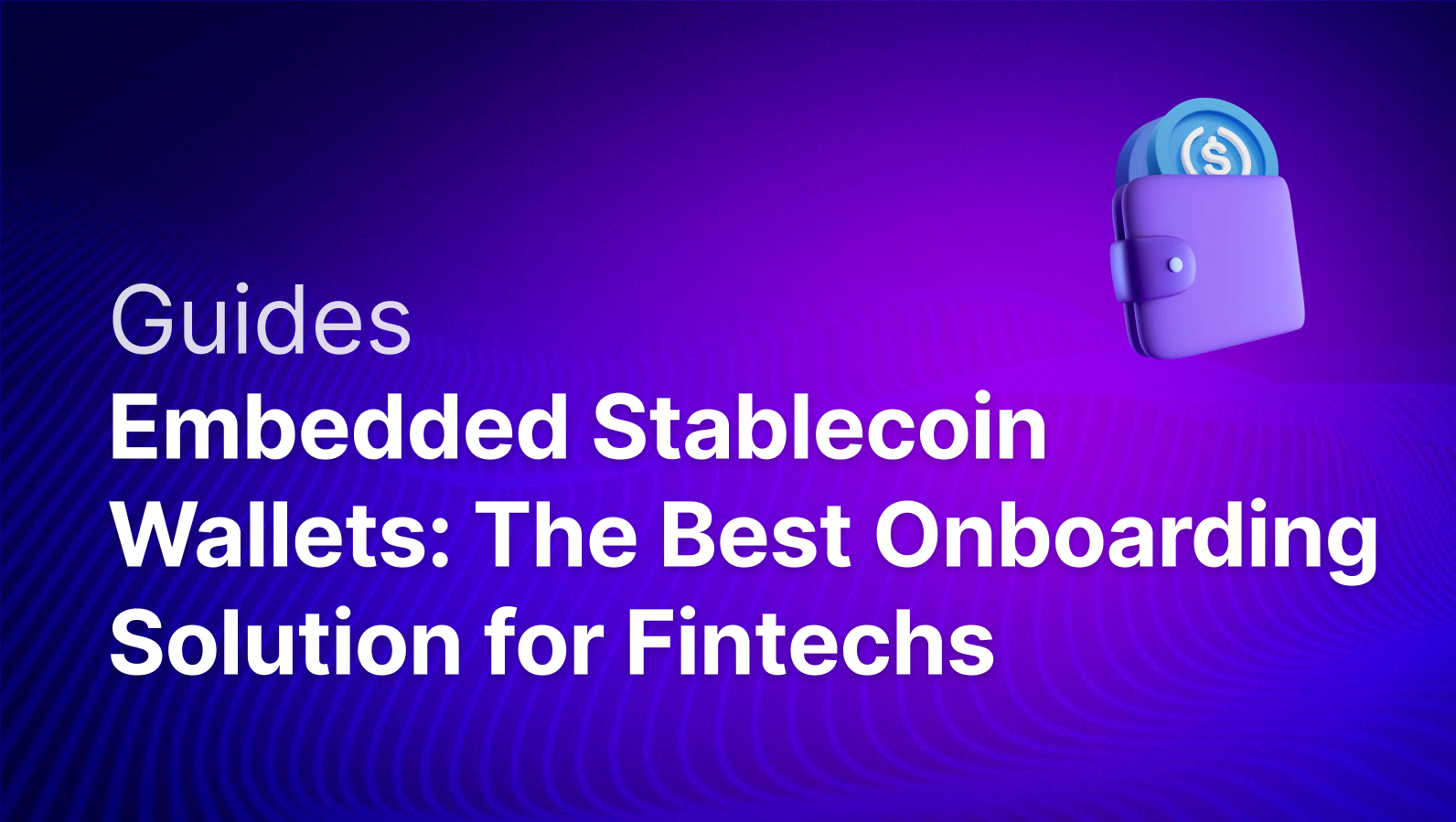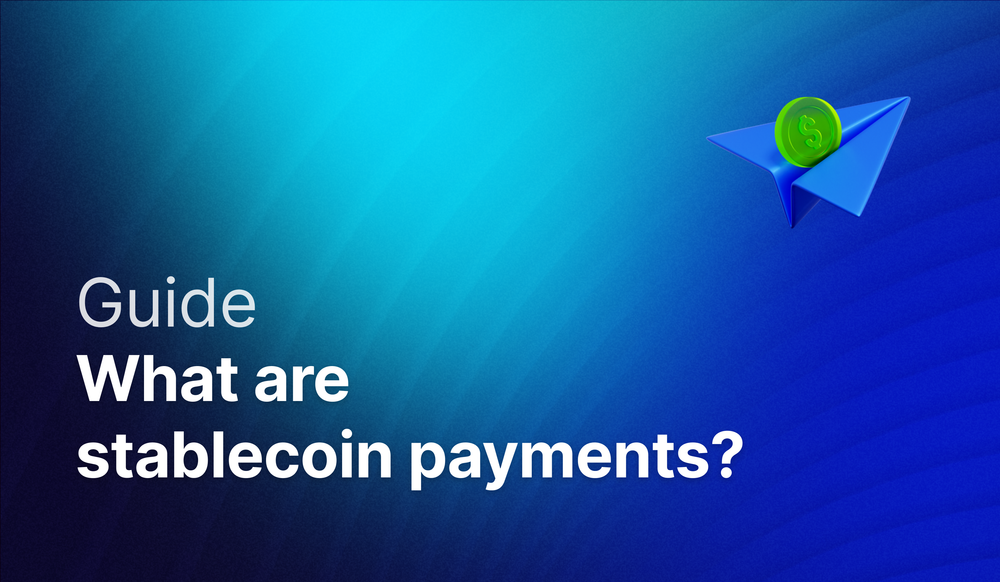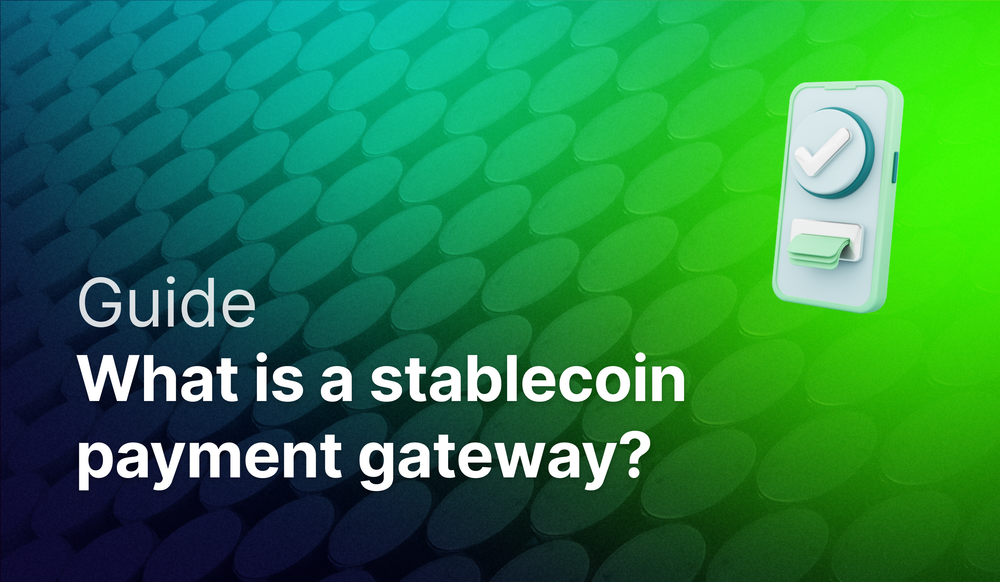As more and more of the world's money is transacted using stablecoins, it's essential for fintechs to explore ways to implement stablecoins into their platforms and apps. A key piece to the stablecoin implementation puzzle is the wallet, which is used to onboard users, hold assets and make transactions.
In order to create wallets for users, you need to either build all of the infrastructure necessary to provision wallets (key management, node infrastructure, transaction processing engine, etc.) or partner up with an embedded stablecoin wallet provider. In this article, we'll dive into embedded stablecoin wallets and compare the different wallet types out there so you can make the best decision on which wallets to implement into your platform.
What are Embedded Stablecoin Wallets?
Embedded stablecoin wallets (or stablecoin accounts) are user wallets that can be implemented in a few lines of code within your app on the client or server-side. They're built to be seamlessly integrated into the host platform so users can have a more intuitive experience. For example, here's how you can create embedded stablecoin wallets with Crossmint in a few lines of code:
async function createWallet(walletAddress, apiKey) {
const response = await fetch("https://staging.crossmint.com/api/2022-06-09/wallets", {
method: "POST",
headers: {
"X-API-KEY": "sk_staging...",
"Content-Type": "application/json",
},
body: JSON.stringify({
type: "evm-smart-wallet",
config: {
adminSigner: {
type: "evm-keypair",
address: "0x...",
},
},
}),These wallets are primitives for building any stablecoin-powered application and allow you and your users to move money globally, sign transactions and connect to other websites/apps. Using embedded stablecoin wallets can allow teams to launch and implement stablecoins faster than building the wallet infrastructure themselves.
Comparing Embedded Stablecoin Wallets with Other Wallet Types
Embedded Stablecoin Wallets vs. Self-Custody Wallets
Embedded stablecoin wallets offer a more streamlined user experience compared to traditional self-custody wallets. Self-custody wallets are wallets where users have control over their private keys and sign transactions on their own. Embedded stablecoin wallets abstract this complexity away so that they can be far more accessible to mainstream users who may be unfamiliar with blockchain technology.
Embedded Stablecoin Wallets vs. Exchange-Based Wallets
Exchange-based wallets exist within centralized cryptocurrency exchanges (like Coinbase or Binance). While they offer simplicity, they typically keep user funds in commingled accounts and require users to leave your application ecosystem.
In contrast, embedded wallets can be fully integrated into your application, maintaining your branding and user experience throughout. This creates a seamless journey where users may not even realize they're interacting with blockchain technology.
Embedded Stablecoin Wallets vs. Custom-Built Wallet Infrastructure
Building custom wallet infrastructure from scratch requires significant technical expertise in blockchain development, cryptography, and security. It demands substantial development resources and ongoing maintenance.
Embedded stablecoin wallet solutions eliminate this burden by providing ready-made infrastructure through APIs and SDKs, allowing development teams to focus on their core product features rather than complex wallet implementation details. This dramatically reduces time-to-market and ongoing operational costs.
Key Advantages of Embedded Stablecoin Wallets for Fintechs
- Reduced Development Time: Implement wallet functionality in days rather than months
- Lower Technical Barriers: No need for specialized blockchain expertise on your team
- Seamless UX: Users experience your brand and interface, not a third-party wallet
- Scalability: Enterprise-grade infrastructure without the maintenance burden
- Compliance Support: Many embedded wallet providers include built-in compliance features
By leveraging embedded stablecoin wallet solutions, fintechs can rapidly deploy stablecoin functionality while maintaining control over the user experience and focusing development resources on their core value proposition.
Get Started with Crossmint's All-in-one Stablecoin Platform
If you’re a fintech looking to implement stablecoins, Crossmint’s enterprise-grade stablecoin platform for wallets, onramps, compliance, tokenization and more is a full stack solution to build any use case - trusted by major banks, Fortune 500 companies and VC-backed startups.
Key advantages of Crossmint’s Embedded Stablecoin Wallets include:
- Create wallets for users and companies in a few lines of code, client or server-side
- Bank-grade security & compliance with native AML monitoring, account recovery, flexible key management, secure transaction signing, spam filters, 2FA and more
- Use your own authentication or our authentication - easily deployed in just a few minutes
- Flexible custody models that include non-custodial, custodial and hybrid architectures that can be changed anytime with minimal user disruption
- No vendor lock-in so you can migrate providers at any time securely - no change in wallet address and no need to export keys
Key advantages of Crossmint’s Stablecoin Onramp include:
- Fully managed onramp that includes payment processing, chargeback protection, KYC/KYB, and AML screening
- Ability to launch with fully headless APIs to create flows that feel native to your app, or use embedded or hosted modalities to launch faster
- Regulatory compliance as a registered VASP in Europe with pending MiCA and MTL approvals
- Instant settlement times and best-in-class transaction success rates
- Global coverage and support for most non-sanctioned regions
- Track users and payments with unified dashboards
- Support for 40+ chains (most EVM chains), Solana, Sui, Aptos, and more
- Broad token support for stablecoins (USDC, USDT) and other cryptocurrencies
If you’re a fintech looking to implement stablecoins within your product, app or services, reach out to us here.








